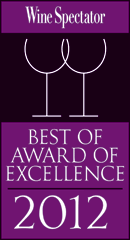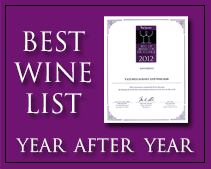The wines of Chambolle epitomise the finesse of which Burgundy is capable.
Date: January 7, 2011
About Wines from Chambolle-Musigny, Burgundy of France
Best wine supplier in Philippines discusses wine related topics
Chambolle-Musigny is one of the most delightful and unspoilt villages of the entire Côte. Driving south along the RN74, just before the road bends east to by-pass Vougeot, a great sign proclaiming ‘Chambolle-Musigny … Son site … Ses vins’, attracts the visitor’s eye to the right. There, in the mid distance, with its ecclesiastical head just above its parochial vines, is Chambolle-Musigny, a gently elevated village with its medieval bell tower clearly visible against the backdrop of the limestone escarp-ments of the Combe d’Ambin.
The settlement is of no great antiquity, compared with others along the Côte. It appears in records as Cambolla in 1110, when the monks of Citeaux took up residence. By 1302 the name had changed to Chambolle – thought to be a corruption of ‘champ boullant’, meaning a ‘boiling field’, a reference to the frequent storms which caused the little river Grone to overflow into the fields (most recently in 1965).
Thereafter, until 1500 when permission was granted to build a Church, the hamlet was in the fief of nearby Gilly-les-Citeaux. In 1878 it annexed the name of its most illustrious vineyard – Le Musigny – and became Chambolle-Musigny, and in 1960 decided to widen its horizons further by twinning itself with Sonoma, near San Francisco, USA.
It is often said that the wines of Chambolle epitomise the finesse of which Burgundy is capable. Gaston Roupnel wrote of ‘silk and lace’ and of ‘supreme delicacy’, and others have emphasised the stylistic differences between it and its neighbours – Vougeot to the south and Morey-St.-Denis to the north.
Although such generalizations inevitably mask a diversity of styles, there is geological support for the view that the wines of Chambolle emphasise finesse at the expense of weight or muscle. Erosion of the limestone escarpments of the Combe d’Ambin has deposited a layer of fine, gravely scree on to the land, as far down as the régionale vineyard sites on the opposite side of the RN74. This combined with substantial topsoil erosion in the more sloping Grands and Premiers Crus has left a meagre base for viticulture. With the exception of the northerly section of Bonnes-Mares towards Morey, there is little clay lo be found in these soils.
This limestone dominated geology is completely different from that of Morey and Gevrey. This endows Chambolle’s wines with high initial acidity and a dimension of elegance which particularly expresses itself in aromatic purity and finesse, without the breadth and power of its neighbours. Fine young Chambolle often smells of crushed strawberries – sometimes almost essential.
Chambolle has some 180 ha of vines of which Village land accounts for half. The 22 Premiers Crus cover 60.78.20 ha and two Grands Crus, Bonnes-Mares, towards Morey, and Musigny, towards Vougeot, occupy a further 24.24.40 ha.
In quality potential, the Premiers Crus are a mixed bag. Les Amoureuses, which is very similar in soil to Musigny is the finest and most prestigious and moreover, the most plausible candidate for elevation to Grand Cru, in the unlikely event of a reclassification. Les Charmes is also excellent, followed closely by Les Beaux-Bruns. Les Cras and Les Fuees. Whilst Les Charmes and Les Amoureuses are close in style to Musigny, Les Cras and Les Fuees more resemble Bonnes-Mares, of which they form an extension.
Many of the smaller, lesser known Premiers Crus are sold simply as Chambolle-Musigny Premier Cru, an assemblage of more than one named vineyard. These wines, whilst often fine, rarely reach the heights of an Amoureuses or a Charmes.
The two Grands Crus mark the commune’s northerly and southerly boundaries. Bonnes-Mares, which abuts Morey’s Clos de Tart and which is putatively named after the sisters, Les Bonnes Meres, of the Abbey of Tart-le-Haut is composed of a mixture of soils. There is a gradation from the relatively clay-limestone of Morey with a deepish top-soil of marl, towards the redder clay and iron-bearing soils of Chambolle, which are generally thinner and finer in texture. So a Bonnes-Mares from the Clair-Däu (Jadot) section, in the commune of Morey, is likely to have more tannin and power, but less ‘rondeur’ and finesse, than the same wine from the Chambolle end of the vineyard.
Musigny, at the opposite end of the village and at a lower elevation than Bonnes-Mares, is divided into Les (Grands) Musigny and Les Petits Musigny, The first, oriented to the south-east with a 10-14% slope, is predominantly limestone with a high proportion of pebbles and some ferruginous clay. The second, exposed almost due south, has deeper soil with a higher proportion of clay with surface rock outcrops. Since the Domaine Comte Georges de Vogüé owns 71% of the entire Musigny vineyard, the wine usually represents a blend of both parcels.
Petit Musigny also contains 0,5 ha of Chardonnay from which de Vogüé produce 1-2000 bottles of Musigny Blanc. The wine is sui generis, quite heavy and rich, hideously expensive, and ages well.
A fine red Musigny is a magnificent wine, combining seductive power and unrepentant aristocracy with an extraordinary spectrum of aromas – crushed strawberries when young, sous-bois and liquorice later on. Fully mature after 10-20 years it is often the quintessence of finesse and from a great vintage, an unforgettable experience.
Nothing momentous seems to happen in Chambolle, although, in the early 1950s, there was a gripping dispute between the Mugniers and the Grivelets over the right to use the designation ‘Château de Chambolle-Musigny’ for their wines. Both families live in the village, the Mugniers in the Chateau, and the Grivelets in another substantial, 18th century building round the corner. It appears that many years ago, the Mugniers ceded the ‘brand’ designation ‘Chateau de Chambolle-Musigny’ to the Grivelets. Latterly, the Grivelets became unhappy with the Mugniers’ continued use of it on their labels, even as their address. The matter rumbled along in the courts, but according to Henri Cannard, was never finally adjudicated, having been amicably settled in favour of the Mugniers in 1956.
At any season the village is a place of quiet and serenity. There is no commerce here -apart from a solitary restaurant – and only 49 growers – making it an attractive alternative to the main tourist circuit.
Whether under snow in winter, in the fragrance of a still summer evening, or glowing in the warm russets of an autumn afternoon, it is a delight to wander through Chambolle’s little streets redolent of the past, musing per-haps on some of the great wines which have left here to give pleasure on many a less tranquil shore.
The vrai Chateau is an attractive mid 19th century building with an imposing carriage-sweep, surrounded by a pleasant, wooded park. A circuit from the Church through the village will take you past its gates, perhaps on the way to lunch at the friendly little Le Chambolle-Musigny, where meat and fish are grilled on a large open fire, and the prices are remarkably reasonable.
Source: http://www.greatdomaines.co.za/chambolle_text.html
Are these articles useful for enhancing your wine and dine experience in the Philippines. Do they also help you with travel, leisure, vacation, dining out, nightlife and other leisure activities plans in Manila and other major cities of Philippines? Yats Restaurant hopes to provide you with ample information so you can plan your trips to Pampanga Angeles City Clark Freeport Zone whether you are travelling from Manila or other Asian countries such as Hong Kong, Shanghai, Singapore, Malaysia or Korea.
Restaurant reservations in Manila Philippines, planning of menu, selection of wine for dinner and booking a private function and event in Angeles City Clark Freeport Zone can all be handled. Yats Restaurant and Wine Bar has been regarded by many to be the premier restaurant north of Manila Philippines. Its 3000-line award-winning restaurant wine list has kept many wine lovers happy dining in this restaurant in Angeles City Clark Philippines for over a decade.
Yats Restaurant and Wine Bar was built by Hong Kong-based Yats International in 2000 to provide a world-class cozy fine dining restaurant, business meeting facilities and venues for private dinners and functions in Pampanga Angeles City Clark Freeport Zone. Pampanga Angeles City Clark Philippines was selected for this restaurant because of safety, clean air, absence of traffic and proximity to Manila and Subic.
For comments, inquiries and reservations, email Restaurant@Yats-International.com or call these numbers:
(045) 599-5600 0922-870-5178 0917-520-4401
Http://www.YatsRestaurant.com
Getting to this fine dining restaurant of Angeles City Clark Freeport Zone Pampanga Philippines
How to get to this fine-dining restaurant in Clark Philippines? Once you get to Clark Freeport, go straight until you hit Mimosa. After you enter Mimosa, stay on the left on Mimosa Drive, go past the Holiday Inn and Yats Restaurant (green top, independent 1-storey structure) is on your left. Just past the Yats Restaurant is the London Pub.











